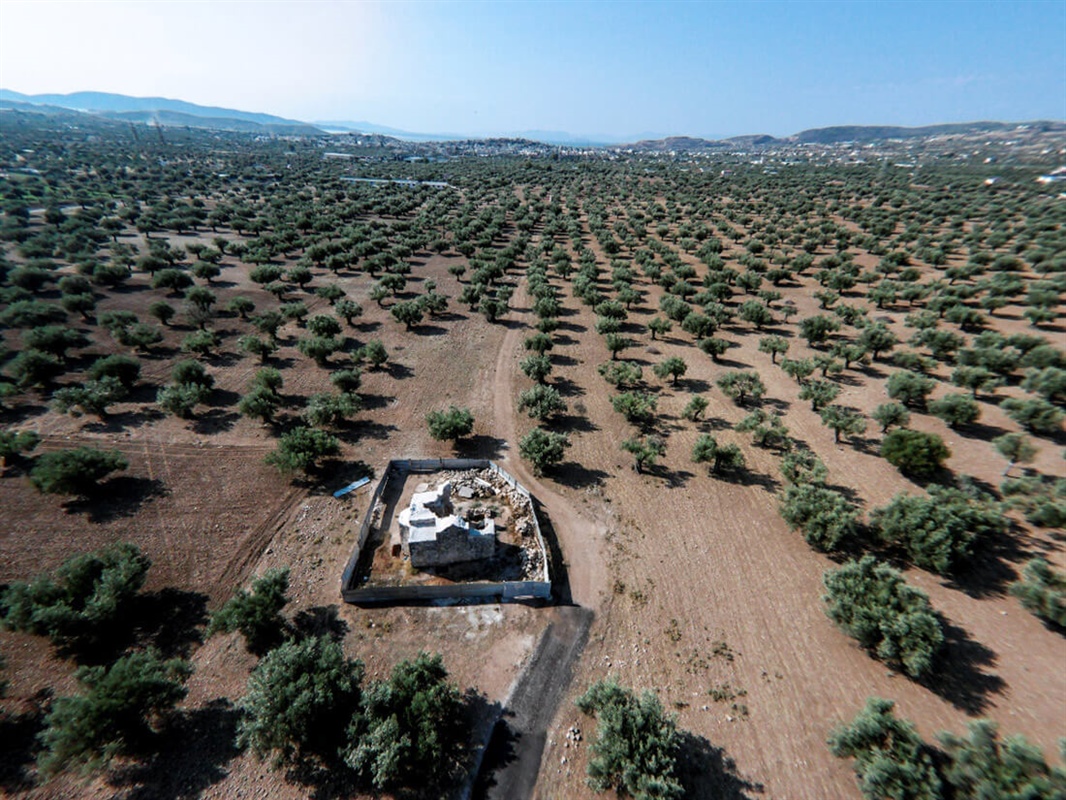Archaeological Site of Eleftherae
Archaeological Site of Eleftherae
Eleftherae was an ancient city located on the borders of Attica and Boeotia, in the location of Kaza, at a point where a natural passage is created between the mountains of Cithaeron and Pastra. It is mentioned by the ancient writers as a Boeotian city. According to mythology, Dionysos, patron of the city, founded Eleftherae in memory of the “freedom” (elefteheria, which in Greek means independence) he granted to the Boeotian cities.
It is mentioned by the ancient writers that in the archaic years (6th century B.C.), Eleftherae, due to enmity towards the Thebans, joined Attica. During this period, it is believed that the Athenian tyrant Pisistratus transported the ancient wooden statue of Dionysos, named “Xoano”, from the city of Eleftherae to Athens. There, it was placed in the Sanctuary of Dionysus Eleuthereus, which was founded on the southern slope of the Acropolis of Athens. In return, he gave Eleftherae a new marble statue. From the ancient Eleftherae came the sculptor Myron, who was active at the beginning of the 5th century BC and worked almost exclusively in bronze. He used to sign as “Myron the Athenian”, however his son, Lycius who belongs to the sculptors of the next generation, declared his origin as “Lycius of Eleftherae, son of Myron”.
Archaeological remains: The ancient settlement and the temple of Dionysos.
The oldest archaeological findings from Eleftherae date back to the Mycenaean years (1200 BC). The ancient settlement occupied the plain area at the entrance of the Kaza pass. In the area of the ancient settlement of Eleftherae, the foundations of an ancient Doric temple, dating back to the 4th century BC and attributed to the god Dionysus, have been uncovered.
Ancient Fortress of Eleftherae: In the 4th century BC, on the hill above the settlement, which controls the natural passage, a strong fortress was built. Its construction is attributed to the Boeotians, who, after the decline of Athens, expanded and restored their dominance in the region. Probably there was an earlier fort or some military installation in the same site. The Fort has an irregular shape and is reinforced by a total of 12 towers.
The access to the Fortress was through two main gates, on the west and east, and four smaller gates. The towers are four-sided, made entirely of stone, and would have had two floors. Between the towers, in the intermediate spaces of the wall, a corridor was formed, the so-called “peridromos”. Stone stairs led from the inside of the Fortress to the towers and the “peridromos”. The Fortress of the Eleftherae, which in modern times is also referred to as “Gyftokastro”, is one of the best-preserved ancient fortresses in Greece.
From ancient times to Christian times: In the first post-Christian centuries (2nd century AD), Eleftherae is mentioned as an abandoned city. However, archaeological findings in the area of the settlement indicate it was inhabited from the 3rd century AD. On the eastern slope of the Fortress, the foundations of two churches (early Christian basilicas) of the early Christian period (5th -6th century AD) are preserved, which are evidence of a prosperous Christian community.








